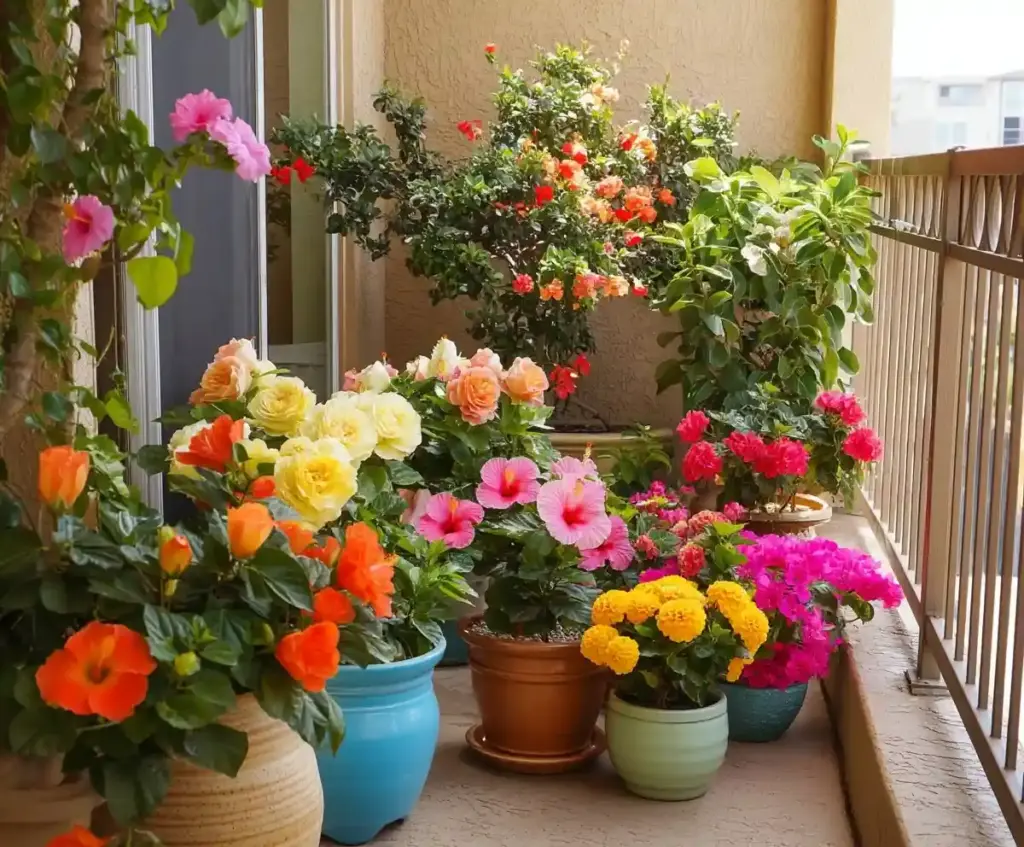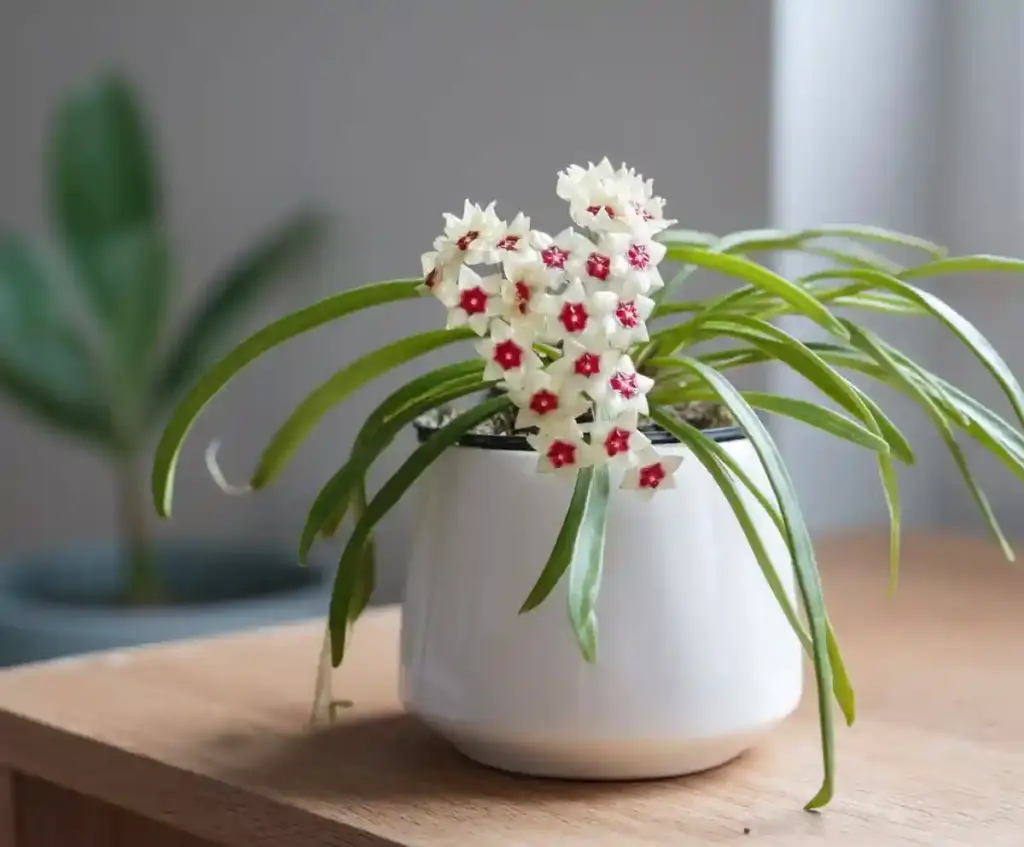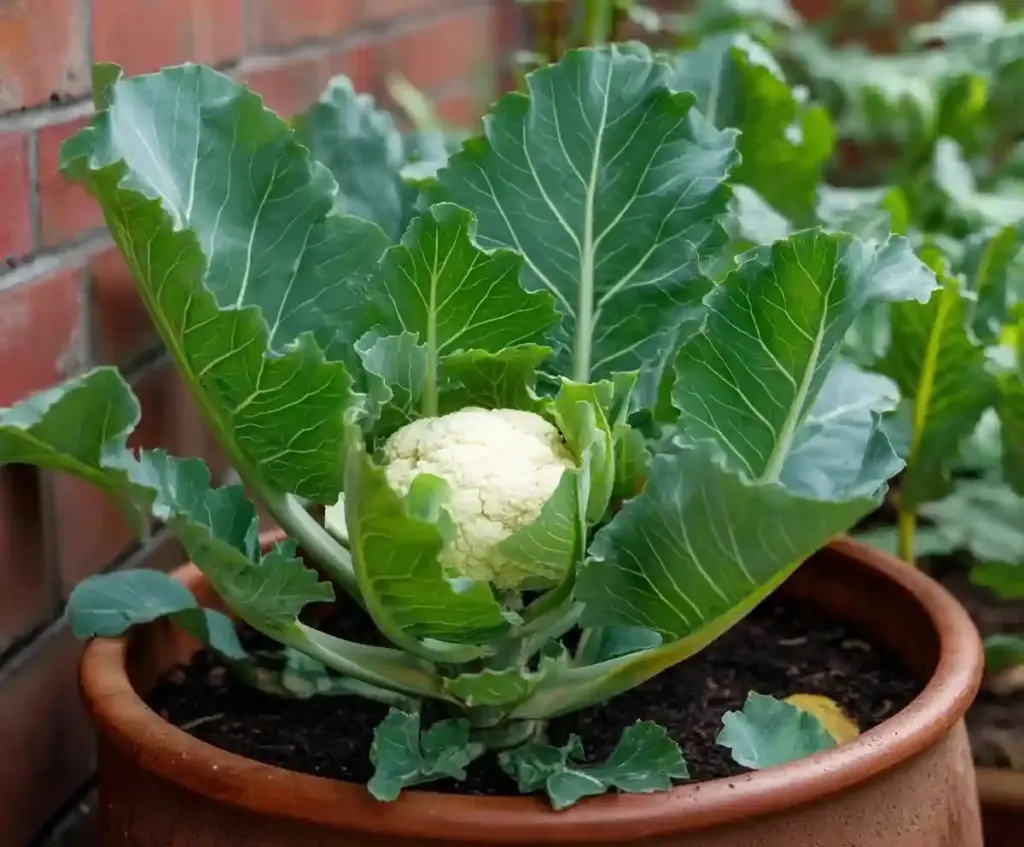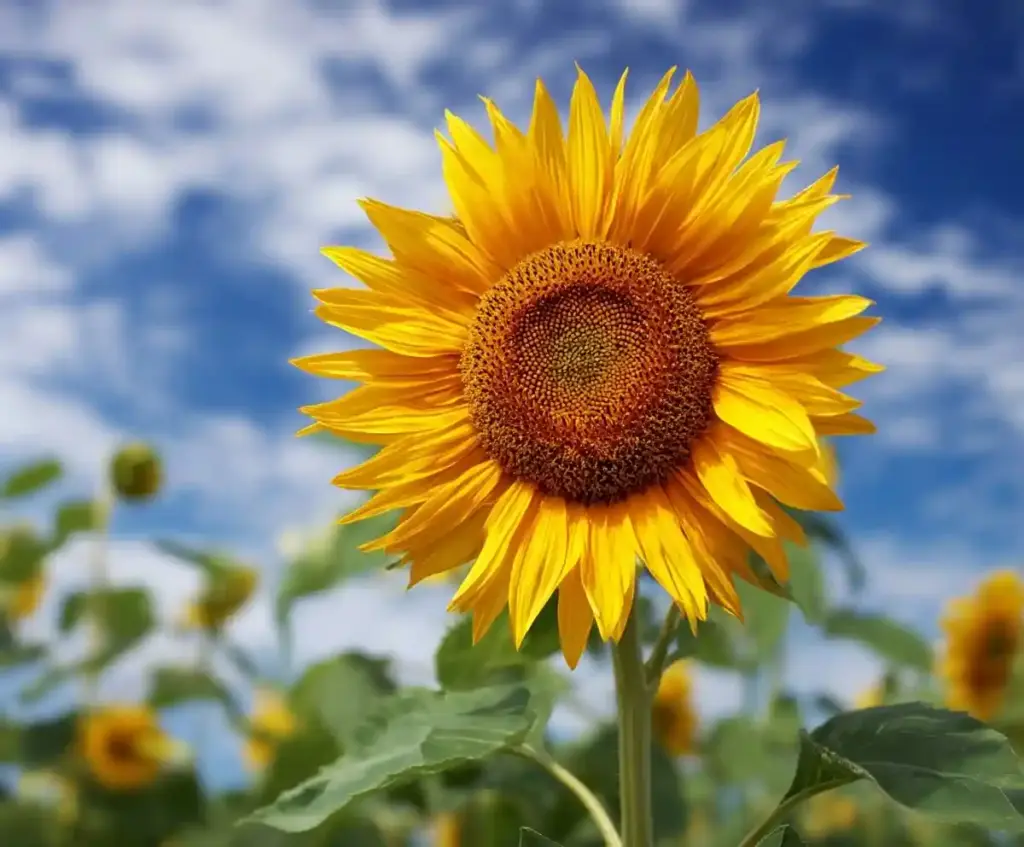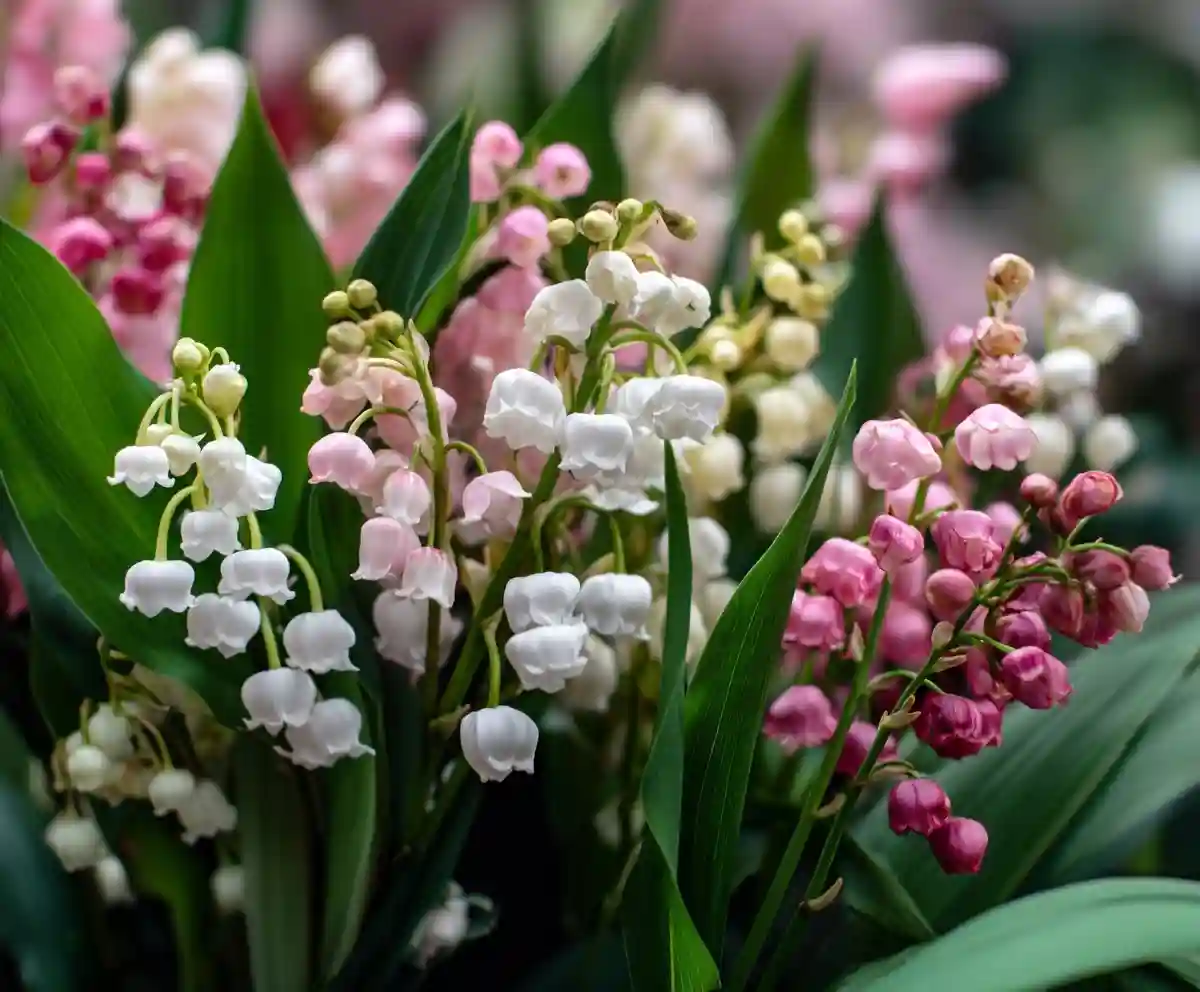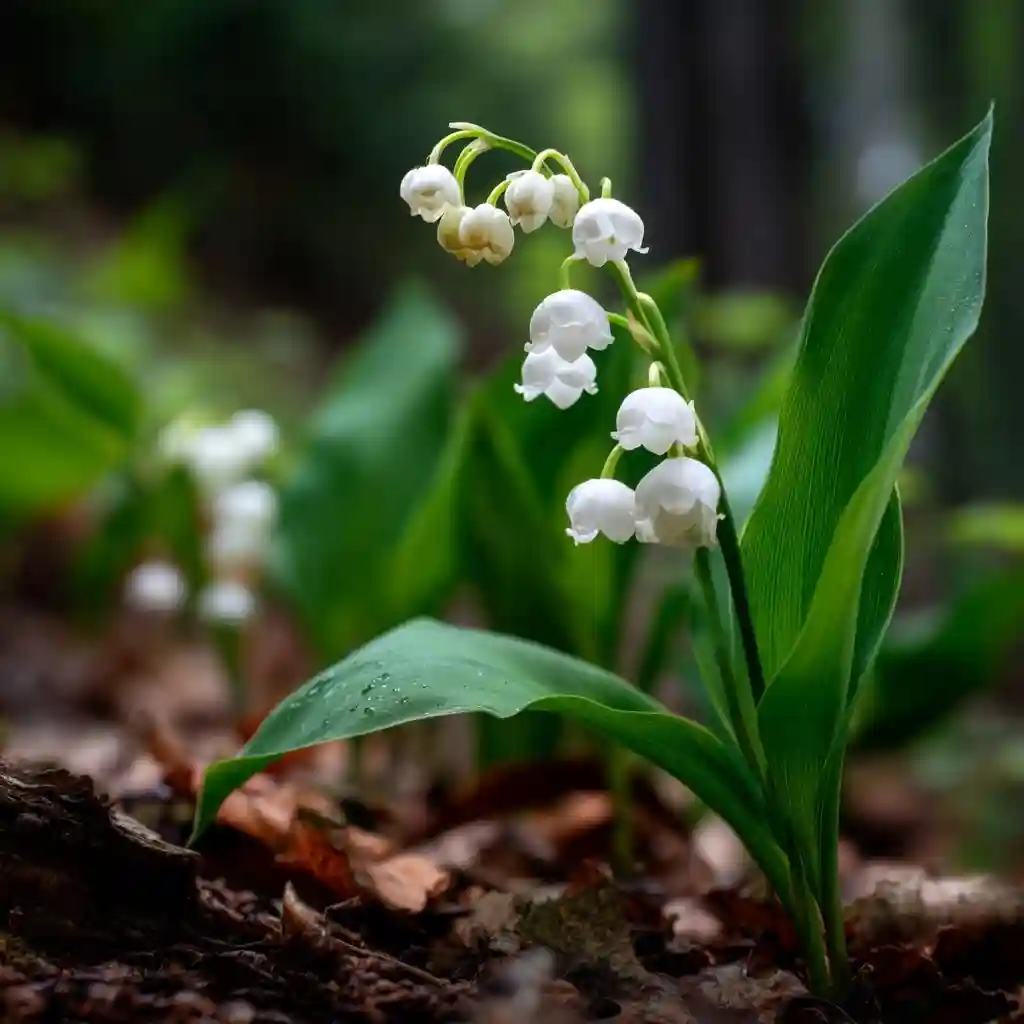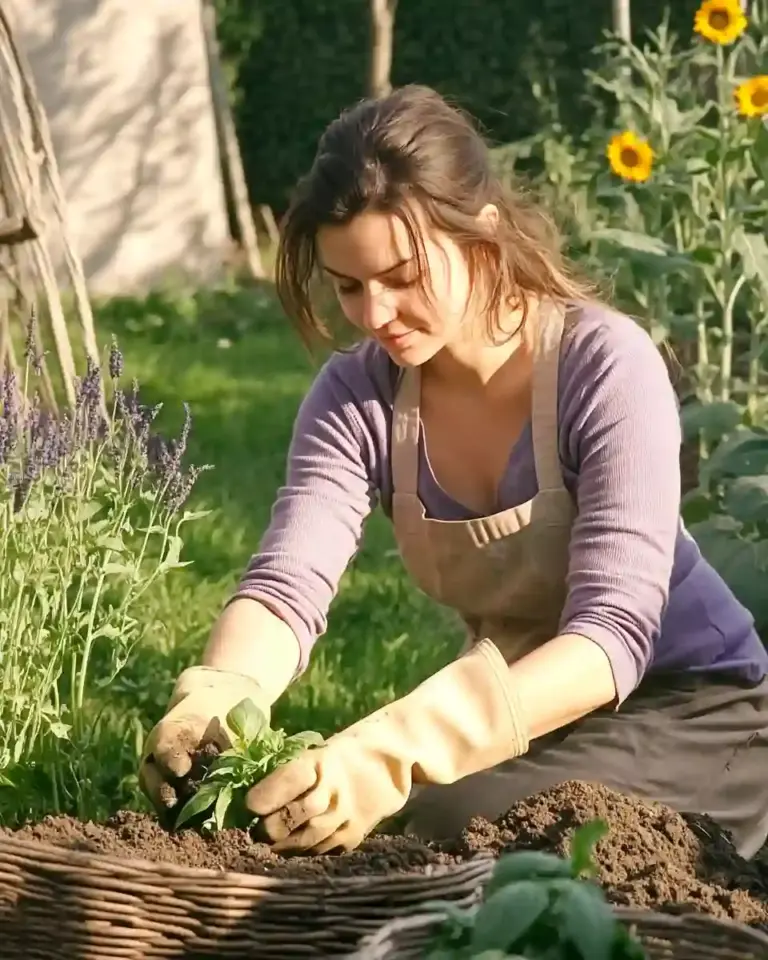Lily of the valley is more than just a sweet-smelling spring bloom—it’s a flower woven into centuries of legend, tradition, and botanical surprise. With its nodding white bells and unmistakable fragrance, it’s easy to think this plant is simple and innocent. But behind its delicate charm lies a world of fascinating facts that most gardeners and flower lovers overlook.
Whether you grow it in your garden, receive it as a gift on May 1st, or simply admire it in woodland walks, this perennial has a rich story. From its surprising plant family to its potentially invasive nature, there’s plenty more to know about lily of the valley than meets the eye.
Let’s take a closer look at 10 things you probably didn’t know about this iconic flower.
Table of Contents
1. Lily of the Valley Is Actually Called Convallaria majalis
Although we all know it by its common name, lily of the valley is officially known as Convallaria majalis. This elegant Latin name translates to “lily of the valleys,” combining convallis (valley) and leirion (lily). It’s a fitting title for a plant that often carpets shady woodland floors in the spring.
Depending on where you are, this plant goes by many other names too—May lily, muguet, wood bell, and even Mary’s tears in English folklore. Despite these poetic variations, all refer to the same plant with graceful, bell-shaped blooms and a sweet perfume that signals the arrival of warmer days.
Knowing the scientific name can help you better understand the plant’s background and care needs—especially when shopping at nurseries or reading gardening guides.
2. Lily of the Valley Belongs to the Same Family as Asparagus and Agave
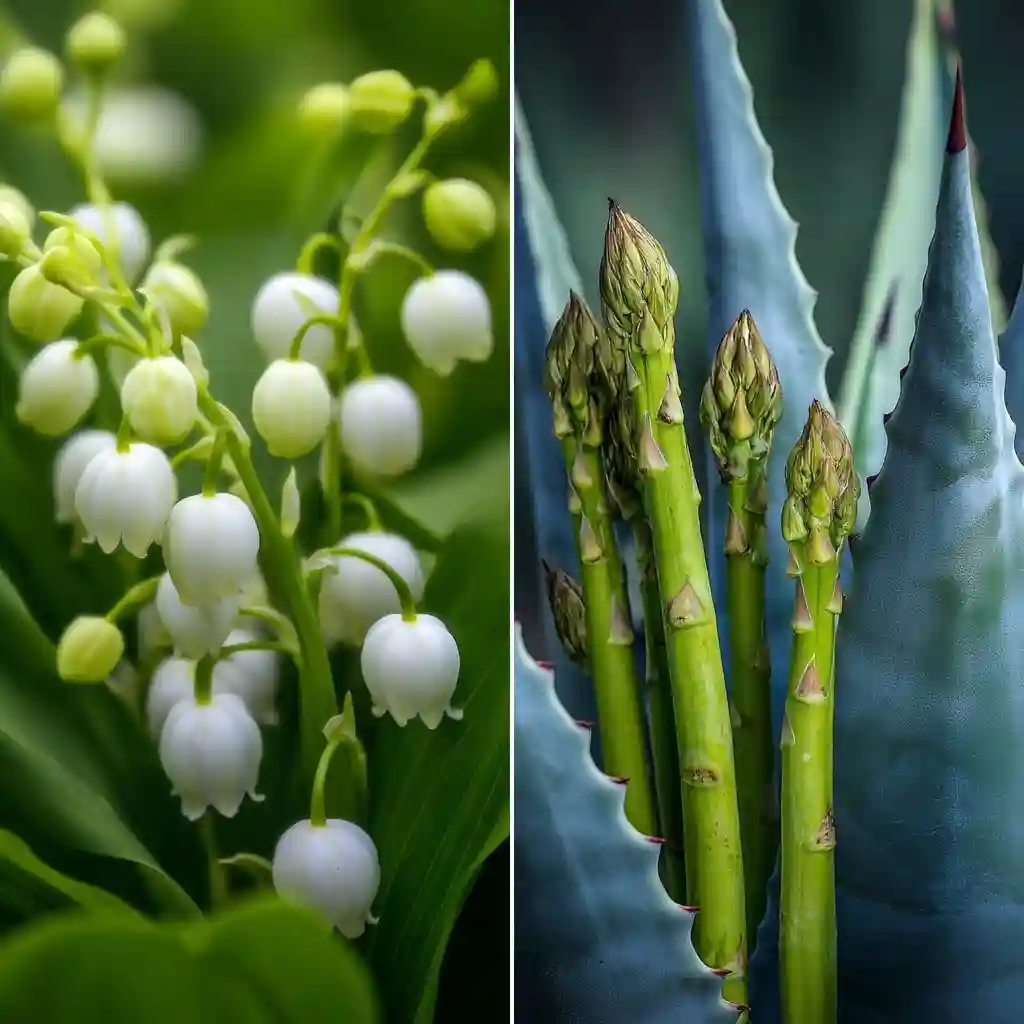
It might sound strange, but lily of the valley shares botanical roots with plants like asparagus, agave, yucca, and hyacinth. According to modern plant classification (phylogenetics), it’s part of the Asparagaceae family—a surprisingly diverse group.
This means that while your springtime lily of the valley may look delicate and floral, it’s technically a cousin to your asparagus spears and the bold, architectural agave plant. That’s quite a contrast!
Earlier systems placed it in the Liliaceae family alongside tulips and true lilies, mainly due to visual similarities in their leaves and flowers. But DNA testing has helped botanists uncover deeper evolutionary relationships, leading to this reclassification.
It’s a great reminder that appearances in nature can be deceiving—and that some of your favorite garden plants might be more closely related than you think.
3. There Are Several Types of Lily of the Valley
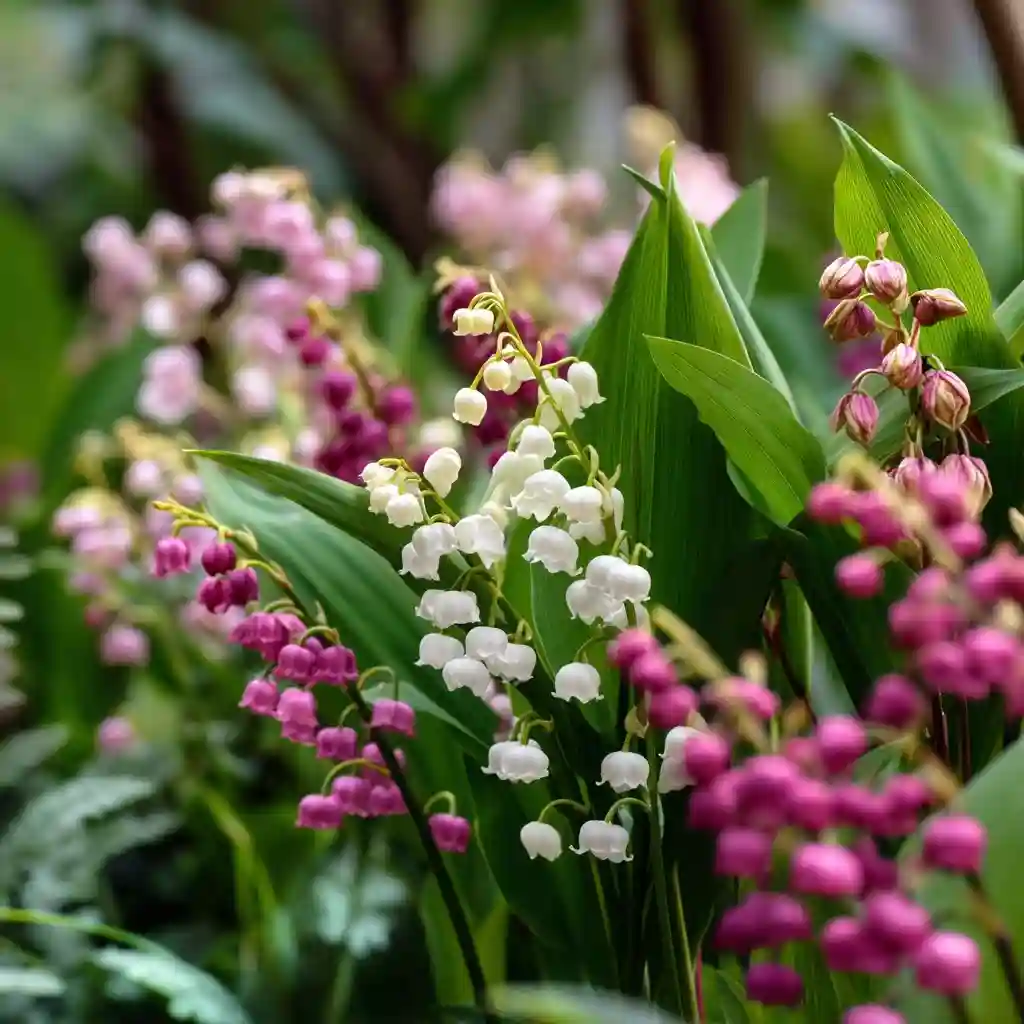
While the classic white bloom is the most familiar, lily of the valley actually comes in several beautiful varieties. The most commonly known type is the traditional Convallaria majalis, with its pure white, nodding bells. But that’s just the beginning.
For a subtle twist, look to Convallaria majalis ‘Rosea’, which boasts soft pink flowers—a gentle pastel hue that adds a rare touch of color while maintaining the plant’s signature fragrance.
Another popular cultivar is Convallaria majalis ‘Bordeaux’, bred for larger, more abundant flowers, making it a showstopper in containers or shady garden borders.
And then there’s the Japanese lily of the valley, known botanically as Ophiopogon japonicus. Despite the name, it’s not a true lily of the valley at all. It features grassy leaves and blue berries, with a growth habit more like ground cover than a flowering perennial.
These variations mean you can enjoy different looks and behaviors while staying within the charm of this beloved plant.
4. Lily of the Valley Is a Hardy Plant
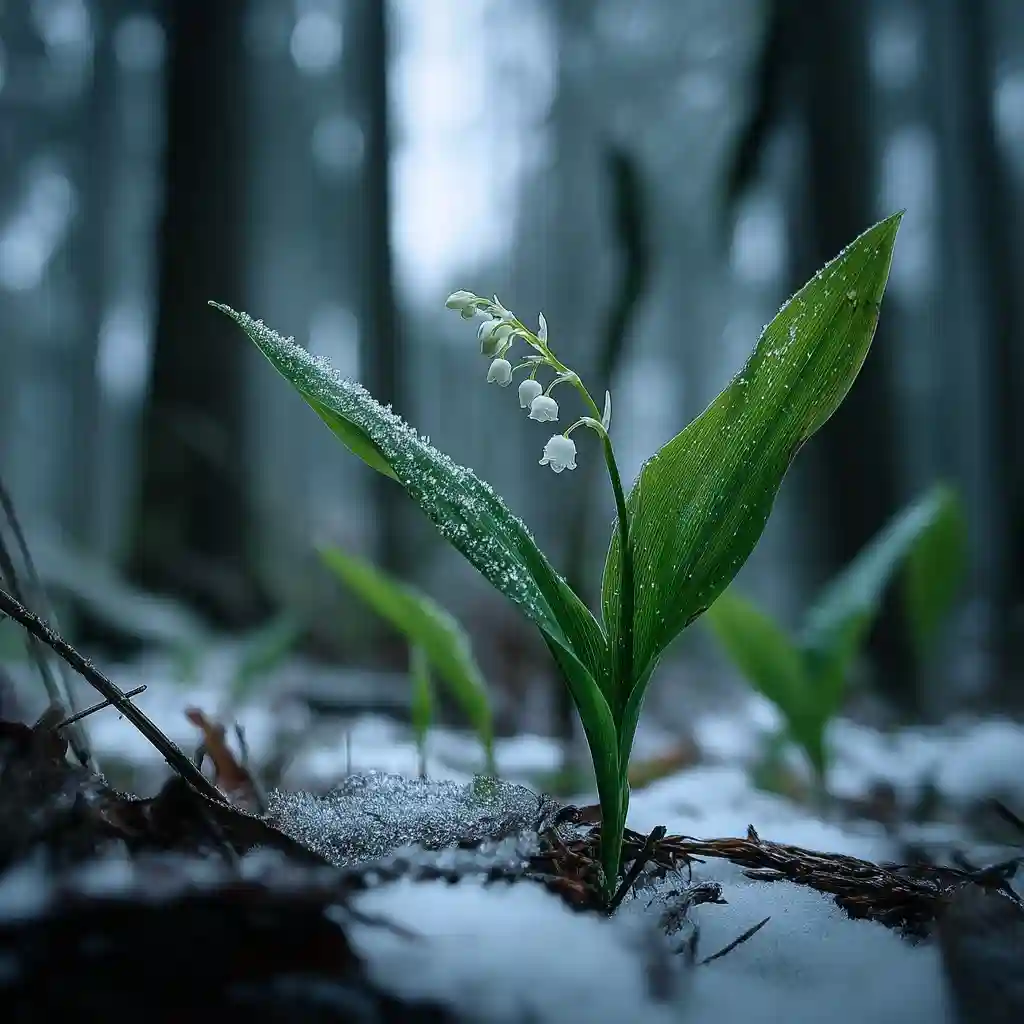
Despite its delicate looks, lily of the valley is tough as nails. This perennial can handle freezing temperatures down to –20°C (–4°F), making it a great choice for gardeners in colder climates. In fact, it thrives naturally in woodlands across much of Europe, Asia, and North America.
From the snowy forests of Ukraine to shaded corners in New York or Portland, lily of the valley reliably returns each spring with minimal care. It spreads through underground rhizomes, gradually forming lush, fragrant groundcover.
However, it’s not suited for all regions. In areas like the Mediterranean, where summers are hot and dry, it often struggles. The plant prefers cool, moist, and partially shaded environments—conditions that mimic its woodland origins.
If you’re in a suitable climate, this is one of the easiest flowering perennials to grow for long-term, low-maintenance beauty.
5. You Should Think Twice Before Planting Lily of the Valley in Your Garden
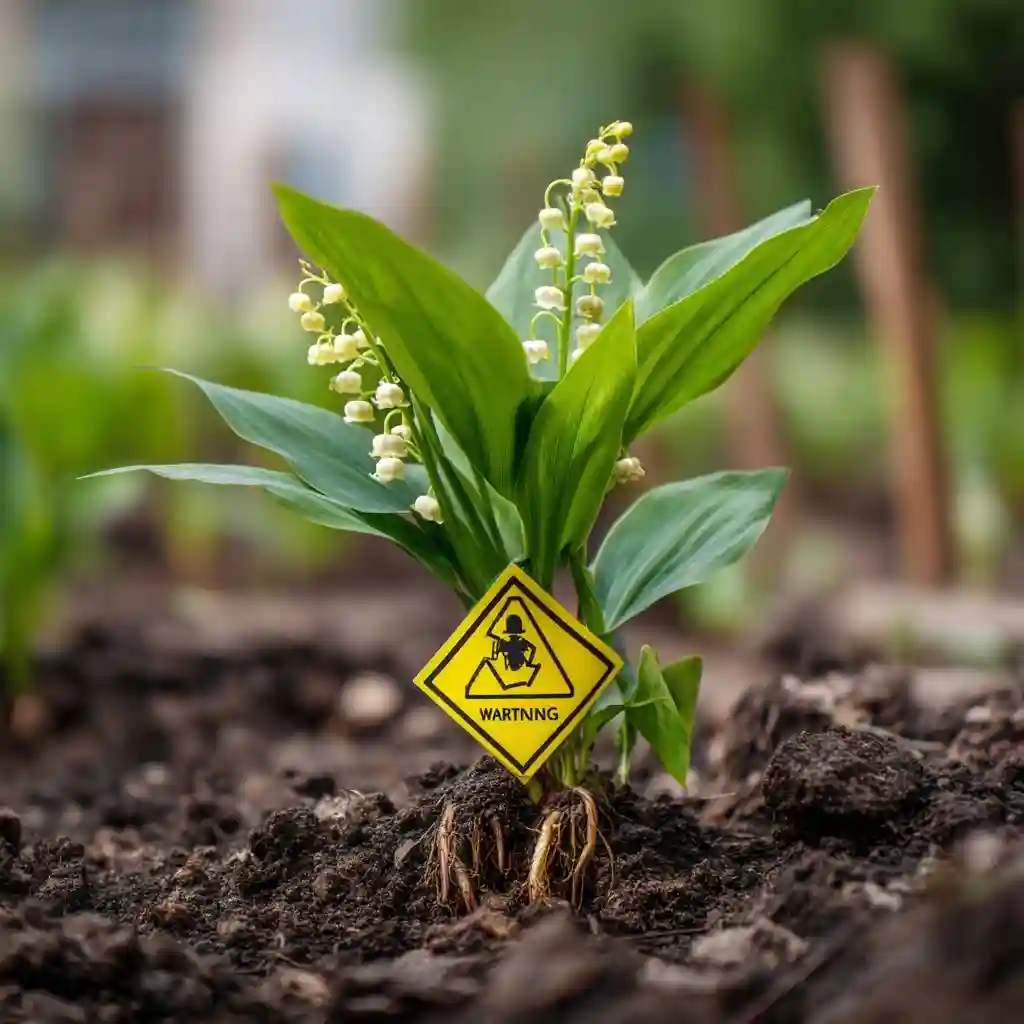
As charming as it may seem, lily of the valley comes with two major warnings: it’s toxic and invasive.
Every part of the plant—from its roots to its dainty blooms—contains cardiac glycosides, compounds that are highly poisonous to both humans and animals. Even drinking water from a vase that held cut flowers can cause symptoms like nausea, vomiting, or irregular heartbeat.
If you have pets or young children, it’s especially important to keep this plant out of reach. One of the most common searches online is, “is lily of the valley poisonous to dogs?” — and the answer is a firm yes.
In addition to its toxicity, lily of the valley is a fast spreader. It propagates underground via creeping rhizomes and can quickly take over garden beds, choking out other plants. What starts as a pretty border can become a dense, uncontrollable patch in just a few seasons.
For safer management, consider growing it in containers or raised beds, where its roots can be contained without risking the rest of your garden—or your pets’ health.
6. Lily of the Valley Doesn’t Always Bloom on May 1st
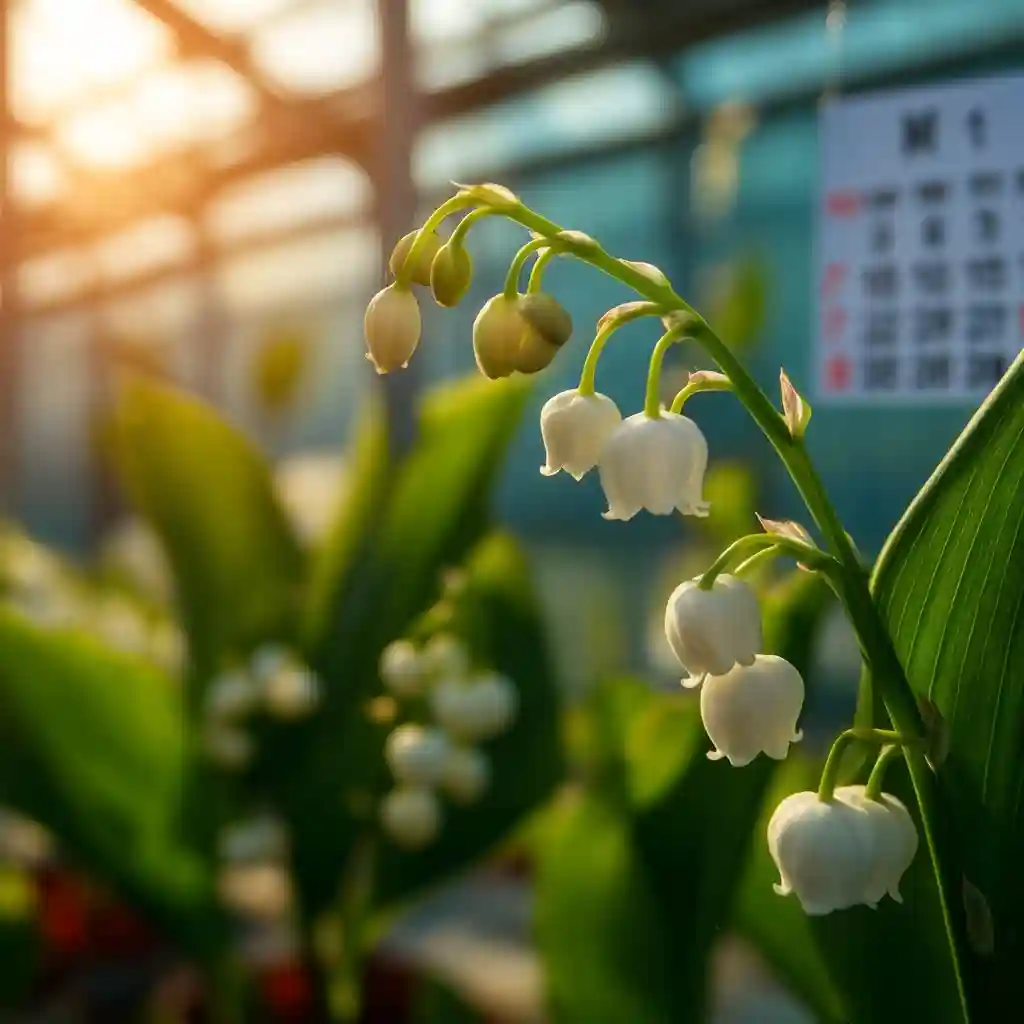
Although it’s strongly associated with May Day celebrations, lily of the valley isn’t guaranteed to bloom on schedule. Its flowering time depends heavily on local climate conditions, especially how mild the winter was and how warm early spring becomes.
In years with early warmth and sunny Aprils, you might see the blooms as early as mid-April. But in cooler regions—or during unpredictable springs—they may not appear until late May or even early June.
Still, in countries like France, where lily of the valley is traditionally gifted on May 1st for luck, nurseries go to great lengths to ensure it’s blooming right on time. They use cold storage, heated greenhouses, and grow lights to control the bloom cycle and meet demand for the holiday.
So while nature may take its time, human ingenuity ensures that sprigs of lily of the valley still fill flower stalls and windows every May Day.
7. Lily of the Valley Has Given Rise to Many Legends
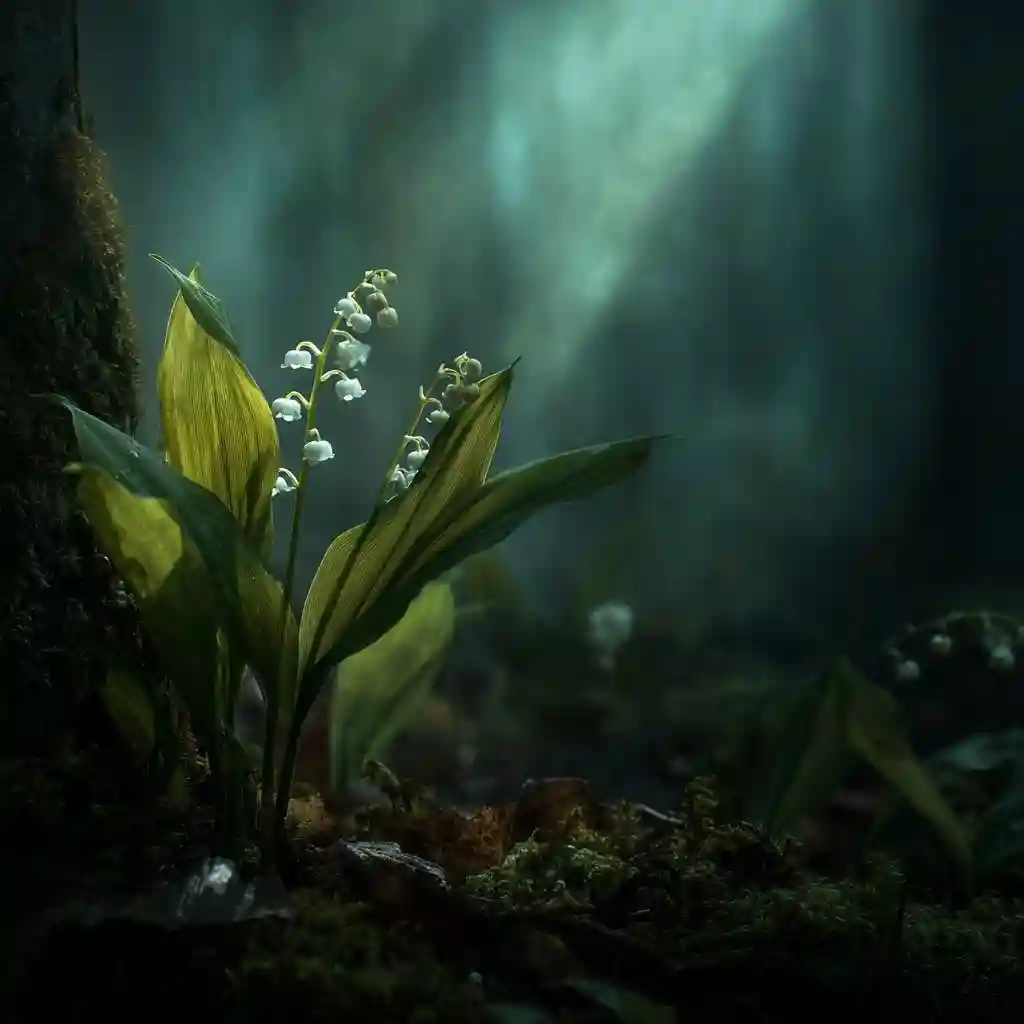
Few flowers carry as much myth and symbolism as the lily of the valley. Its pure white blossoms and sweet fragrance have inspired stories for centuries, from ancient gods to Christian saints.
In Greek and Roman mythology, the plant was said to have been created by Apollo, the god of music and healing. He supposedly blanketed the forest floor with the delicate blooms to cushion his muses’ feet as they wandered through the woods.
Christian legends offer a more somber origin: according to one tale, the lily of the valley sprang from the Virgin Mary’s tears as she wept at the foot of the cross. Another version says the flower bloomed from the blood of Saint Leonard, a French hermit and dragon-slayer.
These symbolic stories reflect the flower’s deep ties to themes of purity, humility, and rebirth, and they continue to shape its role in weddings, religious holidays, and cultural traditions.
8. Lilies of the Valley Have Been Sold Since the 16th Century

The tradition of gifting lily of the valley on May 1st has deep roots—stretching all the way back to the 16th century. The story goes that in 1560, Chevalier Louis de Girard de Maisonforte offered a sprig to King Charles IX of France, who was so touched that he decided all the ladies of the court should receive lilies of the valley each spring.
This charming gesture became a lasting tradition, especially in France, where giving the flower is considered a symbol of good luck and happiness.
Over the centuries, the plant became closely tied to Labor Day, and by 1941 it officially replaced the red rosehip as the day’s emblem under the Vichy regime. Since then, May 1st has remained synonymous with lily of the valley in the French cultural calendar.
Today, the tradition continues, not just in formal bouquets but also in street-side sales, where individuals and families offer sprigs in celebration of spring, friendship, and fresh beginnings.
9. The Lily of the Valley Is More Than Just a Flower
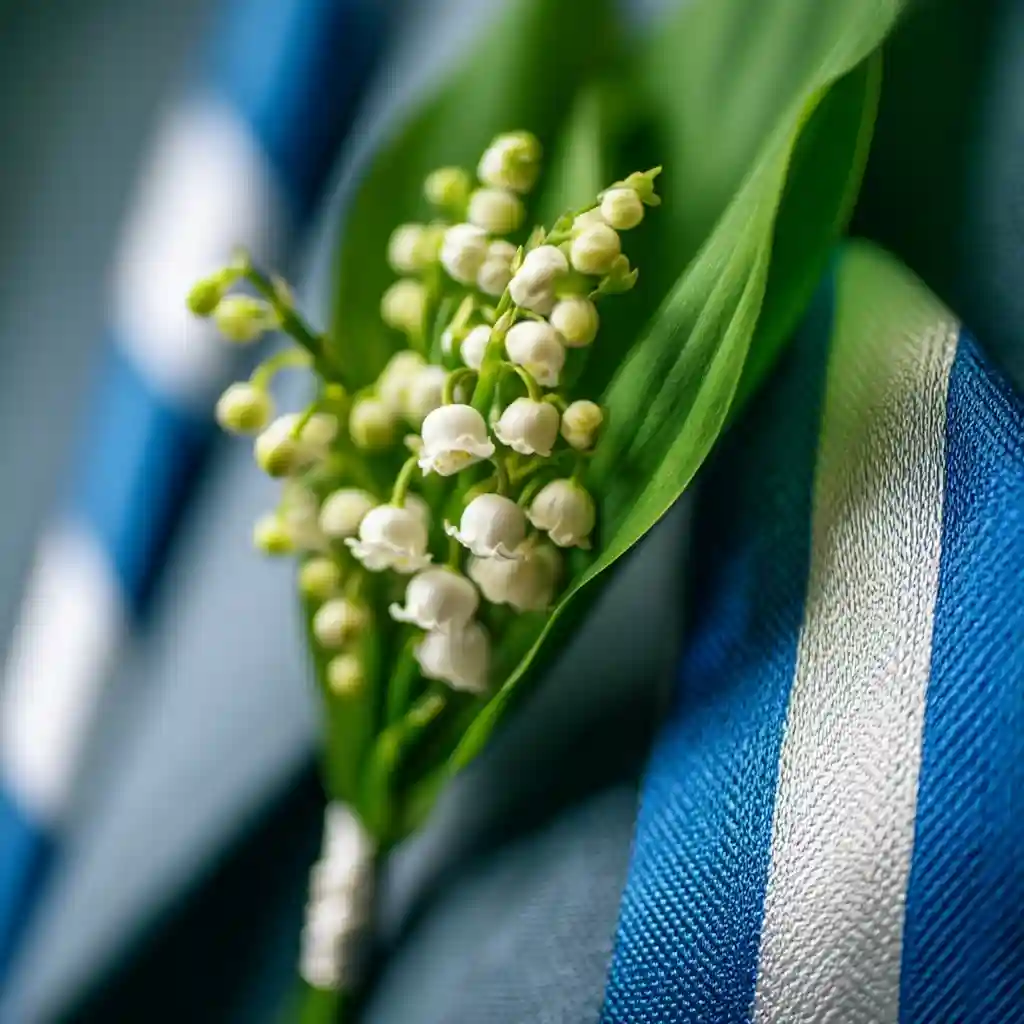
While most people think of lily of the valley as a seasonal bloom, it also holds a symbolic and cultural status in several parts of the world.
In Finland, it’s the national flower, known as kielo. Once a popular girls’ name, Kielo now lives on in farms and pet registries—it’s not unusual for a cow or dog to bear the name in rural areas.
In fashion history, Christian Dior considered lily of the valley his lucky charm. He wore a sprig in his buttonhole for good luck, and the flower became a recurring motif in his couture designs. It even inspired the famous “Diorissimo” perfume, still cherished for its soft, green floral scent.
In a more unexpected twist, the Rugby Club Toulonnais chose lily of the valley as a symbol to honor singer Félix Mayol, a club patron who always wore a sprig during performances.
From sports to scent to symbolism, this humble plant plays a larger role than most people realize.
10. Anyone Can Sell Lilies of the Valley on May 1st
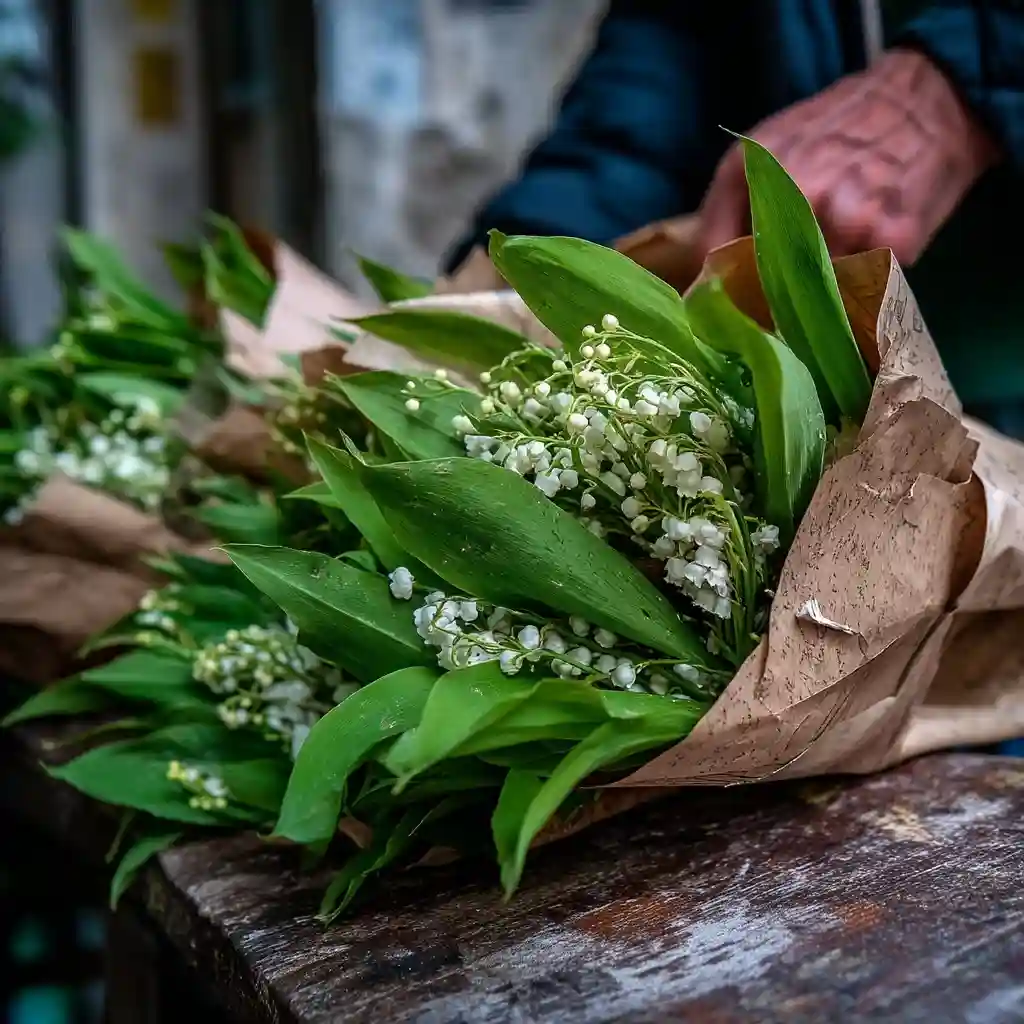
In France, May 1st isn’t just a day to give lily of the valley—it’s also a rare occasion when anyone can sell it, even without a vendor’s license.
This exception to street vending laws allows private individuals and non-profit groups to set up shop for the day. You’ll see children, families, and local clubs offering sprigs on sidewalks, street corners, and doorsteps—all in celebration of spring and solidarity.
However, there are a few rules:
- Only wild lily of the valley, picked from nature or your own garden, can be sold
- Bouquets must be simple—no decorative wrapping or mixing with other flowers
- You must avoid setting up near licensed florists to avoid competition
This annual exception reflects the plant’s deep cultural roots and its symbolic power as a bringer of luck, love, and seasonal renewal.
Conclusion
Lily of the valley may look delicate, but it carries centuries of meaning, surprising botanical ties, and even a few garden risks. From its connection to kings and couture to its powerful scent and toxic nature, it’s a plant that commands more attention than its small blooms suggest.
Whether you grow it in a shaded corner or give a sprig to someone special on May 1st, knowing the stories and science behind this flower makes it even more meaningful.
If you’re considering planting it, be mindful of its invasive habits and toxicity—especially if you have pets or children. And if you’re already a fan, now you can enjoy it with a deeper appreciation for its hidden history and charm.
Frequently Asked Questions
Is lily of the valley poisonous to dogs?
Yes. All parts of the plant, including the water from cut stems, are toxic to dogs (and cats). Ingestion can cause vomiting, diarrhea, and even heart problems. If your pet eats any part of the plant, seek veterinary care immediately.
Can I plant lily of the valley in a container?
Absolutely. In fact, it’s recommended if you want to control its spread. Use a wide, shallow pot with moist, well-drained soil, and keep it in a shady area for best results.
Does lily of the valley bloom every year?
Yes. Once established, lily of the valley is a perennial, coming back each spring with very little care. Just be patient in the first year—it may take some time to settle in.
Can I give lily of the valley as a gift?
Definitely. In many cultures, especially in France, giving a sprig on May 1st is a cherished tradition. Just be sure to let the recipient know that the plant is not edible or pet-safe.
🌿 Love gardening inspiration? Follow me on Pinterest for bold plant ideas, tips, and seasonal color!
More Posts
